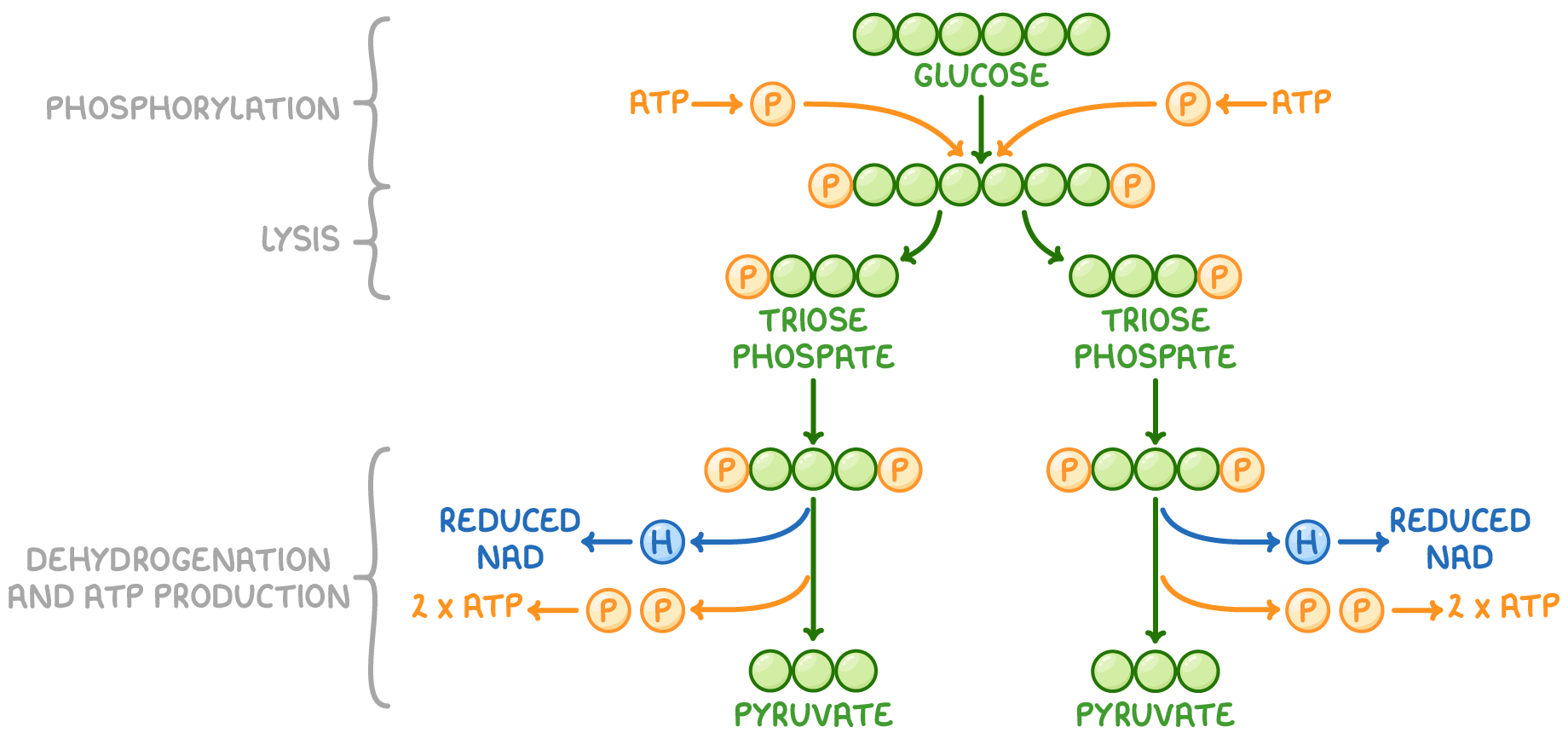Glycolysis
This lesson covers:
- Where glycolysis occurs
- The main steps in glycolysis
- The reactants and products of glycolysis
Introduction to glycolysis
Glycolysis is the first stage of aerobic respiration. It occurs in the cytoplasm of cells.
It breaks glucose, a six-carbon molecule, into two three-carbon pyruvate molecules. This happens through a series of reactions involving specific enzymes.
Glycolysis does not require oxygen so it is an anaerobic process. As well as pyruvate, glycolysis also produces small amounts of ATP and an electron carrier called reduced NAD (NADH).
Reactants and products of glycolysis
The reactants required for glycolysis are:
- One glucose molecule
- Two ATP molecules
The products of glycolysis are:
- Four ATP molecules
- Two reduced NAD molecules
- Two pyruvate molecules
The net energy gain from glycolysis is two ATP molecules and two reduced NAD molecules per glucose molecule processed.
The products of glycolysis, namely pyruvate and reduced NAD, have roles in the following stages of cellular respiration that generate a larger yield of energy.
The main steps of glycolysis

The process of glycolysis is divided into four distinct stages:
- Phosphorylation - Two ATP molecules donate phosphate groups to glucose.
- Lysis - The phosphorylated glucose molecule is split into two molecules of triose phosphate (TP).
- Dehydrogenation - A hydrogen is removed from each TP molecule (they are oxidised) and used to form two molecules of reduced NAD.
- Production of ATP - The TP molecules are converted into two pyruvate molecules, also producing four ATP molecules through substrate-linked phosphorylation.
After glycolysis, if oxygen is available, pyruvate moves through mitochondrial membranes by active transport.